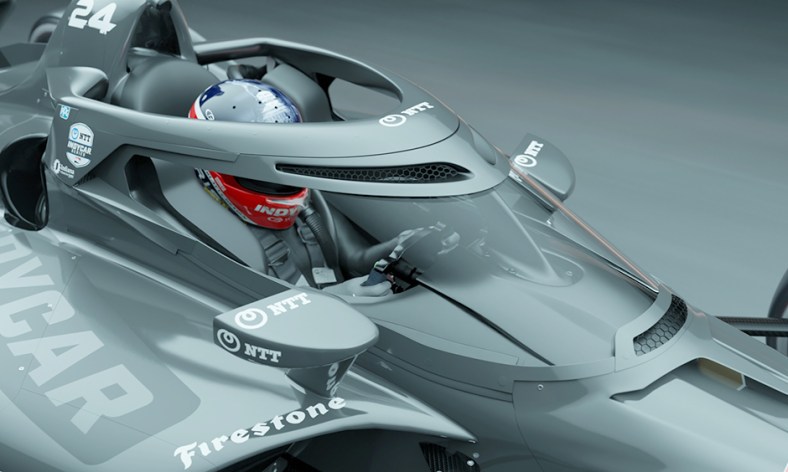
IndyCar will debut a new road and street course aero screen this weekend for the fabled Long Beach Grand Prix.
The upgraded model, which builds upon the device implemented in advance of the 2020 season, is lighter but also features elements to keep drivers cooler during races that take place in the summer month.
It accomplishes this with vents but also a top front duct that directs air to the drivers’ chests. The ducting is 3D printed in rubber to prevent hand injuries in an incident.
“One of the objectives of doing a 2.0 version was to save weight,” said Tino Belli, director of aerodynamic development for IndyCar. “Then we’ve taken that opportunity to also make the styling nicer, improve the driver ventilation, and make the thinner polycarbonate as strong as the thicker polycarbonate.”
The original aeroscreen was 18.8 pounds and the update has been reduced to 14.5 pounds. The new frame is as strong as the original but weighs 6.8 pounds less. Combined, the entire weight of the system has been reduced 11.1 pounds without, according to IndyCar, taking away from its durability.
From a competition standpoint, Belli says overall downforce has been reduced by approximately 35 pounds.
Some of this is proactive, however, as the currently delayed hybrid engine system will add 11 pounds to the current platform, making both a combined wash.
The vents were a priority to IndyCar because the series has data that shows a heart rate reaching 85-95 percent of capacity and 150-200 beats per minute, raising body temperature to over 100 degrees coupled with protective clothing.
Drivers reported no issues with their field of vision with the outgoing aero screen which gave IndyCar room to implement the slits.
“We learned over the years where the limit of the vision was,” Belli said. “In the first version, we were conservative. We gave them a wider field of vision. We found out that they didn’t need it. So, now we’ve used that space to create a vent which comes underneath the titanium top frame and it gets ducted down to blow air toward the driver’s chest.”
Matt Weaver is a Motorsports Insider for Sportsnaut. Follow him on Twitter.

